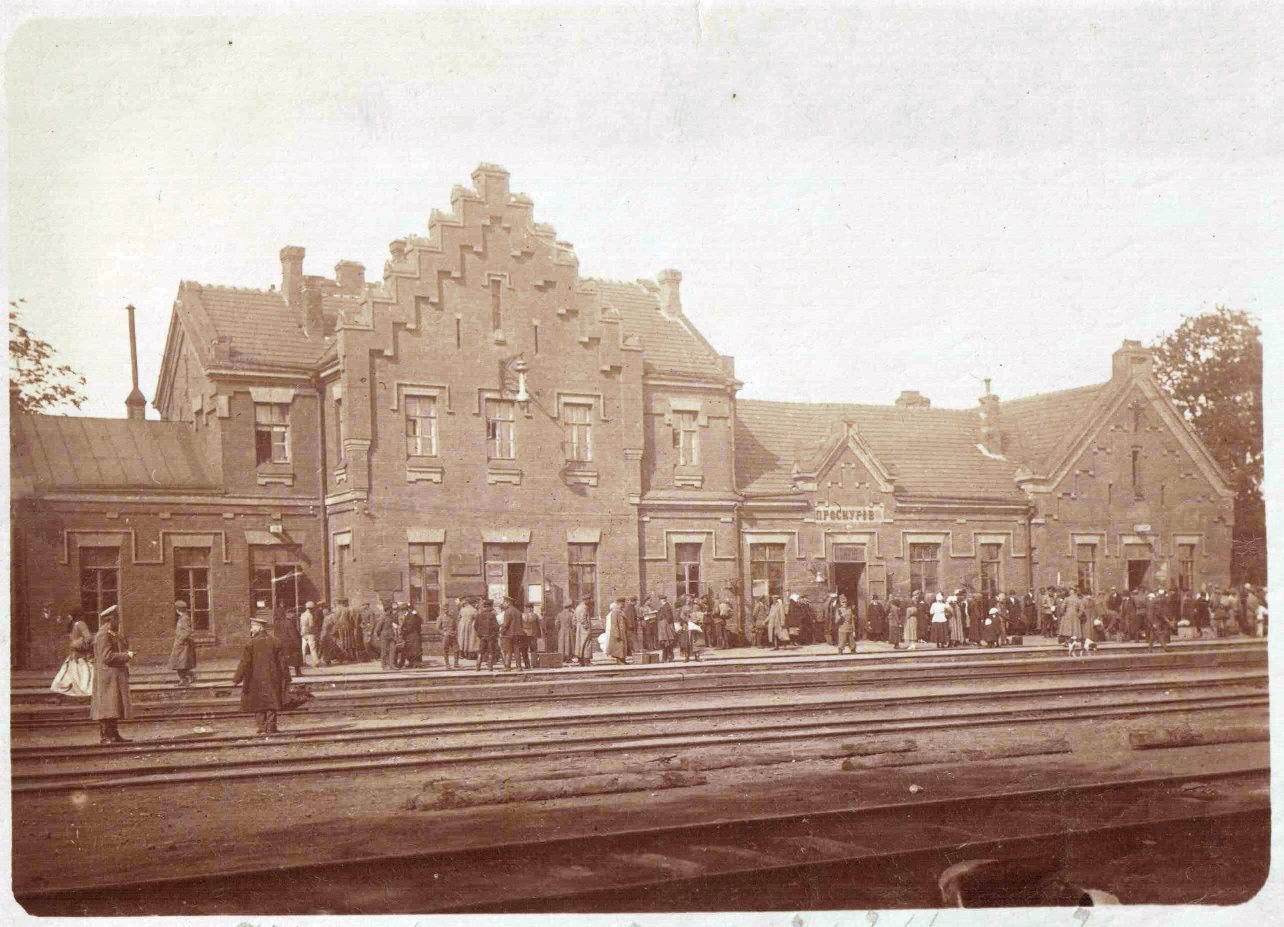
History Railway Station



A significant event in the city’s history took place back in 1870 – the completion of a railway line between Zhmerynka and Volochysk, which runs east-west through the southern edge of old Proskuriv. The site for the station was chosen in a vacant lot outside the city, among wetlands, near the post road to Letychiv. A paved road through the swamp was built from the city to the train stop near the current park named for Ivan Franko and the stadium.
At the same time, a railway station house was built and it became an important landmark in life of Proskuriv citizens. Before the beginning of the 20th century the Proskuriv citizens and intelligentsia spent their week-ends and holiday afternoons at the railway station. The reason was that in those years only four trains passed through the town each day. An hour before the train arrived, the local elite gathered here. Men talked business, ladies walked along the platform showing their new outfits and a restaurant operated on the railway station premises. Then came the long awaited moment -- the trains arrived every 45 minutes. They brought mail, fresh newspapers and news from the capital and Europe...
At the beginning of the 20th century, after completion of railway lines to Kamyanets-Podilskyi and Shepetivka, Proskuriv became an important railway junction. The city was home to the management of the Department of the Podillya Railway, and in the suburban village of Hrechany, they built a cargo station, locomotive depot and workshops.
The history of the Proskuriv railway station in early 20th century was full of other events, especially during the Ukrainian revolution of 1919-21. For example, in February of 1919 the Chairman of the Ukrainian Central Council, Professor Mykhaylo Hrushevskyi was at the station for a few days while waiting to begin a trip abroad. And, in March and November of that year, when Proskuriv became the temporary capital of the Ukrainian People's Republic (UPR) the government train visited for three weeks and UPR state institutions operated.
During World War II the station was ruined, so after the liberation of Proskuriv from Nazi invaders, the question arose of building a new facility. In 1952, the old station was dismantled and in its place, according to plans of Kyiv architects, they built a new one. At that time the Railway Station Square, was designed and in 1955 it was adorned with a monument to Bohdan Khmelnytskyi. Monument sculptors Makar Vronsky and Oleksiy Oliynyk made the sculpture so harmonious with the cityscape that it immediately became the symbol of the city. Later in the сity of Khmelnytskyi three more monuments to the great hetman were erected. One monument is near the Oblast Philharmonic Hall, the second – in front of the National Academy of Border Troops of Ukraine, and the third – on Prospekt Myru Street near the Interregional Academy of Personnel Management. The сity of Khmelnytskyi ranks first place in Ukraine and the world for the the number of monuments to Bohdan Khmelnytskyi.
The station was renovated and expanded in 1984 and an administrative building, cash rooms, luggage space and a spacious lobby were added. Passenger traffic has also increased. The railway station of 1952 could receive 300 passengers at a time, now it's 1,700.
Interestingly, part of the previous station was preserved inside the new one. If you raise your head before entering the central platform, you can see parts of the old walls, stucco and even a chandelier in the Soviet Empire style.
Another building that forms the railway station area is a nine-story post office. Built in 1970, it became the first in Ukraine to have automatic mail sorting.



